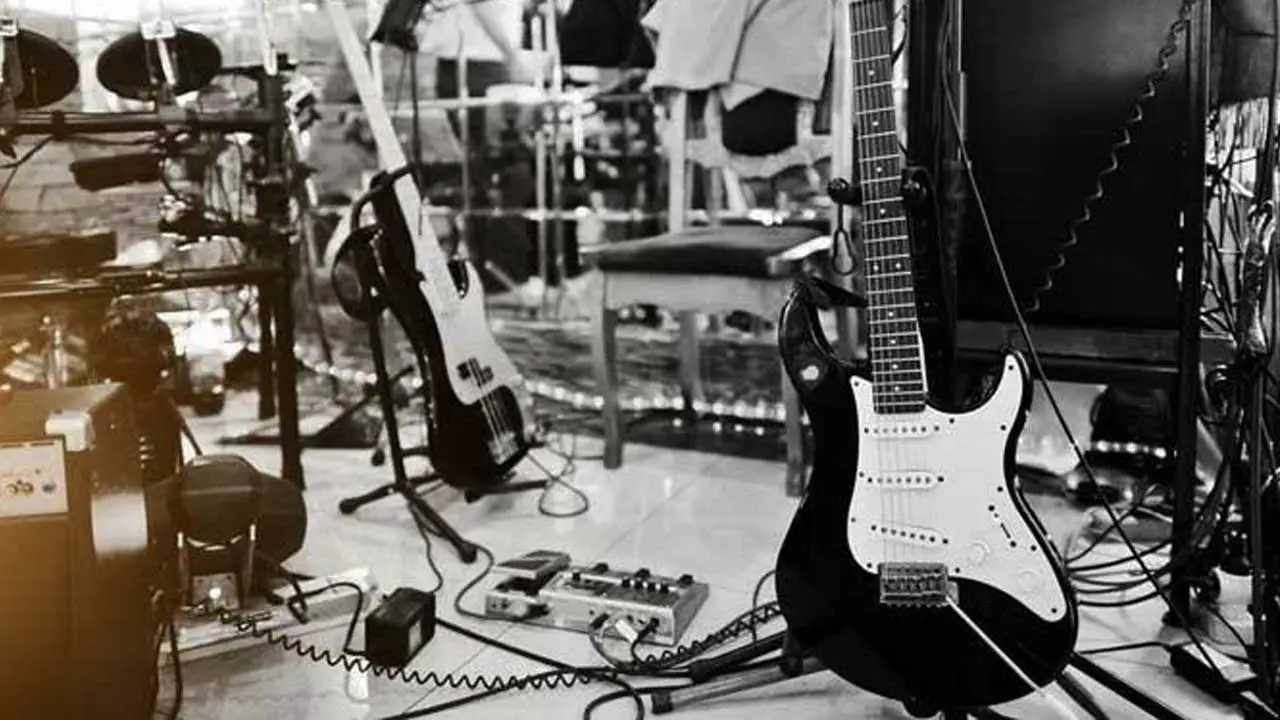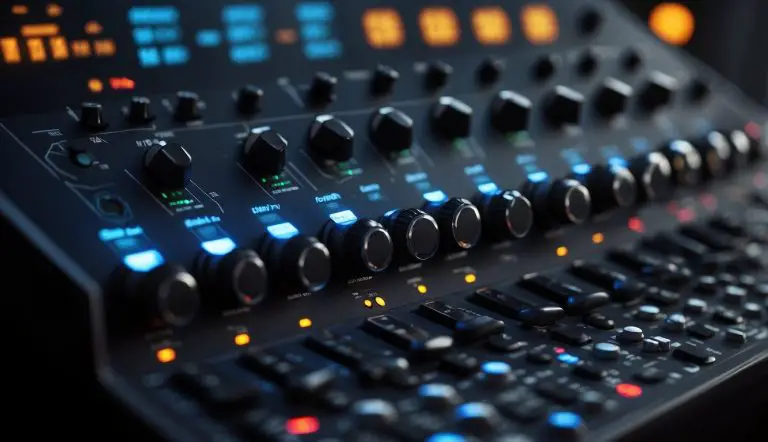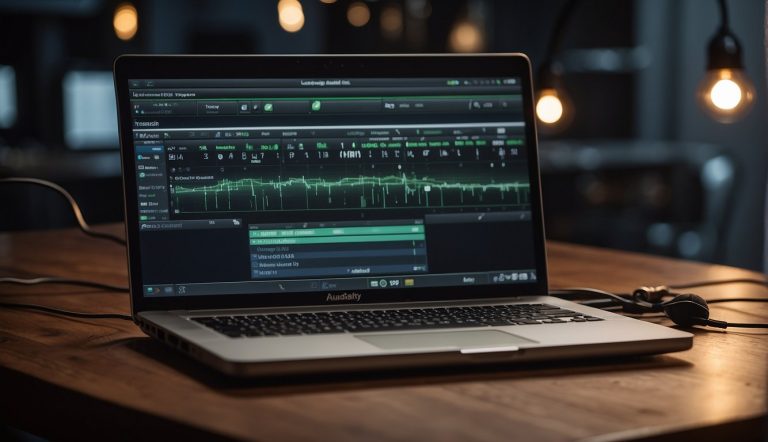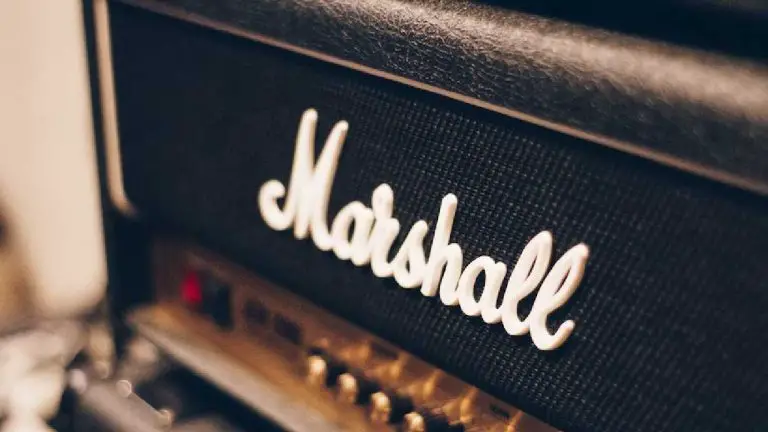Delay vs. Reverb: Choosing the Best Option for Your Sound
When it comes to adding depth and dimension to your music, effects like delay and reverb can be incredibly useful tools. But which one is better? The truth is, it depends on what you’re trying to achieve.
Delay is a time-based effect that creates a copy of your sound and repeats it back after a certain amount of time. This can be used to create rhythmic patterns, add texture and depth, or even simulate the sound of a natural echo. Reverb, on the other hand, simulates the natural reverberation of sound in a space, creating a sense of depth and space. It can be used to add warmth and richness to your sound, or to create the illusion of playing in a larger space. Both effects have their own unique strengths, and the choice between them will ultimately depend on the specific needs of your music.
Understanding Delay and Reverb

What is Delay?
Delay is a time-based audio effect that records the original sound and plays it back later in time, creating an echo effect. This effect can be used to add depth to a sound or to create rhythmic patterns. The delay time is the time between the original sound and the echo, and it can be adjusted to create different effects.
What is Reverb?
Reverb is another time-based audio effect that simulates the sound of a space, such as a room or a hall. It creates the illusion of space by adding multiple echoes to the sound, which blend together to create a sense of depth and ambience. Reverb can be used to make a sound appear more natural or to create a specific mood.
What’s the Difference Between Delay and Reverb?
The main difference between delay and reverb is the way they affect the sound. Delay creates a single echo of the sound, while reverb creates multiple echoes that blend together. Delay is often used to create rhythmic patterns or to add depth to a sound, while reverb is used to create a sense of space and ambience.
Another difference is the way they are used in a mix. Delay is often used sparingly, as too much delay can make a mix sound cluttered and confusing. Reverb, on the other hand, can be used more liberally, as it creates a sense of space and can help blend different sounds together.
Instruments can also be affected differently by delay and reverb. For example, a guitar can sound great with a little bit of delay to create a sense of space, while a piano might benefit more from a rich reverb to create a sense of depth.
Overall, both delay and reverb are important tools in a musician’s arsenal, and understanding how to use them effectively can help take your sound to the next level.
Types of Reverb
When it comes to reverb, there are various types that you can use to create a sense of space and depth in your mix. In this section, we’ll discuss some of the most common types of reverb and their characteristics.
Room Reverb
Room reverb is a type of reverb that emulates the sound of a small room. It has a short decay time and is ideal for adding a sense of space to individual tracks, such as vocals or drums. Room reverb can also be used to create a sense of intimacy or closeness.
Hall Reverb
Hall reverb is a type of reverb that emulates the sound of a large concert hall. It has a longer decay time than room reverb and is ideal for adding a sense of grandeur and spaciousness to your mix. Hall reverb can also be used to create a sense of distance or separation.
Plate Reverb
Plate reverb is a type of reverb that uses a metal plate to create the reverb effect. It has a bright and smooth sound and is ideal for adding a sense of depth and richness to your mix. Plate reverb can also be used to add a sense of shimmer or sparkle to your tracks.
Spring Reverb
Spring reverb is a type of reverb that uses a spring to create the reverb effect. It has a unique and distinctive sound and is ideal for adding a sense of vintage warmth and character to your mix. Spring reverb can also be used to add a sense of bounce or liveliness to your tracks.
Chamber Reverb
Chamber reverb is a type of reverb that emulates the sound of a large chamber or hall. It has a longer decay time than room reverb and is ideal for adding a sense of depth and spaciousness to your mix. Chamber reverb can also be used to create a sense of naturalness or realism.
In conclusion, each type of reverb has its own unique characteristics and can be used to create different effects and moods in your mix. Experiment with different types of reverb and find the ones that work best for your tracks.
Types of Delay
When it comes to delay effects, there are various types of delays that you can use to add depth and character to your sound. In this section, we’ll discuss some of the most common types of delay effects you’ll encounter in the music industry.
Short Delay
Short delay is a type of delay effect that creates a quick echo, usually less than 50 milliseconds. Short delays are used to add depth and dimension to a sound without creating a distinct echo effect. They can also be used to create a doubling effect, which we’ll discuss in the next section.
Doubling Delay
Doubling delay is a type of short delay that creates a doubling effect by adding a delayed copy of the original sound. The delay time is usually set between 20 and 40 milliseconds, which creates the illusion of two separate sources playing the same part. This effect is commonly used in rock and pop music to create a thicker, more full-bodied sound.
Slapback Delay
Slapback delay is a type of short delay that creates a distinct echo effect. The delay time is usually set between 75 and 250 milliseconds, which creates a single, quick echo that reinforces the original sound. This effect is commonly used in rockabilly and country music to create a vintage, retro sound.
Ping Pong Delay
Ping pong delay is a type of delay effect that bounces the delayed signal back and forth between the left and right channels. This creates a sense of movement and space in the stereo field. Ping pong delay is commonly used in electronic and dance music to create a sense of energy and movement.
Tape Delay
Tape delay is a type of delay effect that emulates the sound of a tape machine. It creates a warm, analog sound that is often used in vintage and retro music. Tape delay is characterized by its saturation and distortion, which adds character and depth to the sound.
In conclusion, each type of delay effect has its own unique characteristics and uses. Understanding the different types of delays can help you choose the right effect for your sound and create a more dynamic and interesting mix.
Using Delay and Reverb in Music Production

When it comes to music production, using delay and reverb can add depth and richness to your mix. Here are some tips on how to use delay and reverb to enhance your music production.
Mixing with Delay and Reverb
When mixing with delay and reverb, it’s important to use them sparingly and intentionally. Adding too much reverb or delay to every track in your mix can make it sound muddy and cluttered. Instead, use them to create a sense of space and depth in your mix.
Using Reverb on Vocals
Reverb can be particularly effective on vocals, adding warmth and depth to the sound. When using reverb on vocals, it’s important to choose the right type of reverb for the style of music you’re producing. For example, a short, bright reverb might work well for a pop song, while a longer, darker reverb might be better suited to a ballad.
Using Delay on Guitars
Delay can be a great effect to use on guitars, adding a sense of space and depth to the sound. When using delay on guitars, it’s important to set the delay time to match the tempo of the song. This will help the delay effect blend in with the rest of the mix.
Using Delay and Reverb on Drums
Delay and reverb can both be effective on drums, adding a sense of space and depth to the sound. When using delay and reverb on drums, it’s important to choose the right type of effect for the style of music you’re producing. For example, a short, bright delay might work well for a fast-paced rock song, while a longer, darker reverb might be better suited to a slow ballad.
Overall, using delay and reverb in music production can be a great way to add depth and richness to your mix. However, it’s important to use them sparingly and intentionally, and to choose the right type of effect for the style of music you’re producing.
Common Mistakes When Using Delay and Reverb
When using delay and reverb, there are several common mistakes that many people make. These mistakes can lead to muddy mixes, unclear sounds, and an overall poor listening experience. Here are some of the most common mistakes to avoid:
Using Too Much Reverb
One of the most common mistakes when using reverb is using too much of it. While reverb can add depth and atmosphere to a track, using too much can make it sound muddy and indistinct. To avoid this, try using reverb sparingly and only on the tracks that need it.
Using Muddy Reverb
Another mistake is using reverb that is too muddy. This can happen when the decay time is set too long or when the filtering is not set correctly. To avoid this, try adjusting the decay time and filtering to get a cleaner sound.
Not EQing Reverb
Another mistake is not EQing the reverb. When you add reverb to a track, it can often add unwanted frequencies that can muddy up the mix. To avoid this, try EQing the reverb to remove any unwanted frequencies and make it fit better in the mix.
Using Delay Too Fast or Too Slow
When using delay, it’s important to get the tempo right. If the delay is too fast or too slow, it can sound out of place and disrupt the rhythm of the track. To avoid this, try adjusting the delay time to match the tempo of the track.
Using Delay in a Rhythmic Fashion
Another mistake is using delay in a rhythmic fashion that doesn’t fit the track. When using delay, it’s important to use it in a way that complements the rhythm of the track. To avoid this, try experimenting with different delay settings and rhythms to find the right fit.
In conclusion, when using delay and reverb, it’s important to avoid these common mistakes to get the best sound possible. By using these tips and techniques, you can create a mix that is clear, balanced, and professional-sounding.
Choosing the Right Delay and Reverb
When it comes to choosing the right delay and reverb, it’s important to understand the differences between them and how they can impact your sound. Here are some factors to consider:
Digital vs. Analog
Digital delay and reverb are often cleaner and more precise, while analog can add warmth and character to your sound. It’s important to consider the style of music you’re creating and what kind of effect you want to achieve.
Room Size and Decay Time
Different types of reverb can simulate different room sizes and decay times. For example, a plate reverb can simulate a smaller room, while a hall reverb can simulate a larger space with longer decay time. Consider the size and style of the room you want to simulate.
Unique Spaces and Feedback Settings
Some reverb plugins offer unique spaces to simulate, such as a cathedral or a cave. Additionally, feedback settings can create unique effects, such as a long, sustained reverb tail or a rhythmic stutter.
Delay and Reverb Parameters
Understanding the parameters of delay and reverb can help you fine-tune your sound. Parameters such as feedback, pre-delay, and diffusion can all impact the final result. Experiment with different settings to find the perfect sound for your mix.
Using Presets vs. Custom Settings
Many delay and reverb plugins offer presets, which can be a great starting point for creating your sound. However, don’t be afraid to experiment with custom settings to create a unique sound that fits your mix.
Whether you’re using a delay pedal or a plugin, understanding the differences between delay and reverb and how to choose the right settings can help you create the perfect sound for your mix.
The Emotional Impact of Delay and Reverb
When it comes to adding effects to your tracks, both delay and reverb can have a significant emotional impact on your listeners. In this section, we’ll explore how these effects can be used to create atmosphere, add ear candy, and enhance the rhythm of your music.
Creating Atmosphere with Reverb
Reverb is an essential tool for creating an open space in your mix. It can give the impression of a large room, a concert hall, or even a cathedral. By adding reverb to your tracks, you can create a sense of depth and space, which can be particularly useful for ambient music or ballads.
Using Delay for Ear Candy
Delay can be used to create ear candy by adding rhythmic echoes to your tracks. Ping-pong delays, for example, can create a sense of movement and excitement, while filtered delays can add a touch of mystery. By experimenting with different types of delay, you can add interest and texture to your tracks.
Filtering and Pitch Bends
Filtering and pitch bends can be used to add even more interest to your delays. By filtering out certain frequencies, you can create a sense of distance or add a lo-fi effect. Pitch bends can create a sense of tension or release, depending on how they’re used.
Rhythmic Delays in Dub Music
Rhythmic delays are an essential part of dub music. By adding delays to specific parts of your tracks, you can create a sense of space and rhythm. Dub producers often use delays to create a sense of anticipation, building up to a drop or breakdown.
Call-and-Response with Delay
Delay can also be used to create call-and-response effects between different parts of your tracks. By delaying a vocal or instrumental line, you can create a sense of conversation between different elements of your mix. This can be particularly effective in electronic music or hip-hop.
In conclusion, both delay and reverb can have a significant emotional impact on your listeners. By experimenting with different types of delay and reverb, you can create a unique sound that adds interest and texture to your tracks.
Conclusion
In conclusion, both delay and reverb are essential tools in any musician’s toolkit. Each effect has its unique characteristics and can add depth and dimension to your sound.
When deciding which effect to use, consider the following:
- The type of music you are playing
- The desired mood or atmosphere
- The role of the instrument in the mix
- The desired level of clarity or muddiness
Delay is best used for creating rhythmic patterns, adding depth to solos, and creating a sense of space. It is also useful for creating a sense of urgency or tension in a song.
Reverb, on the other hand, is ideal for creating a sense of space and depth. It can make your sound more natural and organic and is perfect for creating a sense of atmosphere.
When it comes down to it, the choice between delay and reverb ultimately depends on your personal preference and the sound you are trying to achieve. Experiment with both effects and find what works best for you and your music.
There is no right or wrong answer when it comes to choosing between delay and reverb. Both effects have their place in music, and it’s up to you to decide which one to use in any given situation.




